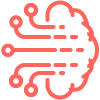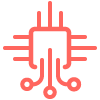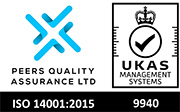Combining emotion and motivation, to drive action
Now that might sound fluffy – but there’s hard fact and science behind it.
Research tells us the most effective communications use a blend of emotion and motivation. That’s because without relevant emotion, there is no resonance. No brand memories or associations. And without motivation, well, no-one takes action. And action is what it’s all about. It’s action that delivers the tangible results and effectiveness our clients need.
We tap into data, neuro and behavioural sciences to help understand humans and drive growth
We get those tools and that expertise from our Human Understanding Lab.
‘The Lab’ is a team of over 100 specialists / boffins: expert neuroscientists, research practitioners, data scientists and behavioural scientists, all with a frankly ridiculous quantity of initials after their names. Basically, lots of doctors who couldn’t help you if you got sick!
What they can do is use science to better understand people – their beliefs, emotions, motivations and behaviours. Essentially, what makes them tick (or click). That’s a powerful thing in B2B, where there’s a lot of talk about understanding audiences, but not much substance or rigour put into doing it.
In real life, that looks like this...

Neuroscience & biometrics
Implicit reaction time testing
Eye tracking and facial coding
EEG, GSR & FMRI*
*Techy bits explained below

Behavioural science
Change frameworks
Understanding barriers to change
BeSci shortcuts

Data strategy & Data science
AI and machine learning
Customer lifecycle & value
Audience insight
Measurement & attribution

Custom research
Surveys and focus groups
Online communities
Trends and ethnography
Passive metering

Neuroscience & biometrics
Our neuroscience and biometrics techniques range from implicit time response testing, which measures the authenticity of research responses, to eye tracking, which helps measure what people see (not what they say they saw). There’s even facial coding that captures the universal emotions revealed in facial expressions.
Beyond that, we get really bespoke with things like:
- An Electroencephalogram (EEG for short) which measures brain activity in response to stimuli like videos, ads, content and so on
- The Galvanic Skin Response (GSR) which measures changes in sweat glands and picks up on any deep emotions brought to the surface (literally)
- Functional Magnetic Resonance Imaging (or FMRI) which measures small changes in blood flow – that’s any unconscious emotions or reactions to our work
Though they sound slightly scary, these techniques are all really useful for understanding key moments of elation, disappointment and frustration. And letting us do better marketing.



Behavioural science
In the world of behavioural science, we have what we call ‘BeSci Shortcuts’. These allow our planners and creatives to use their understanding of behavioural science and reflect that in building strategies and coming up with creative concepts.
Behaviour change is a big part of what we do, so our behaviour change models can help to identify, define and track key groups based on their openness to change.
And in a more macro sense, we can map the individual, environmental and social factors that act as drivers or barriers to change.

Data strategy & data science
When it comes to data science, we use AI and machine learning for predictive modelling, response modelling and NLP (neuro-linguistic programming, in case you didn’t know).
You’ll also find us applying our data science know-how to customer lifetime analysis and lifetime value (LTV) modelling. And accessing data sources like Global Web Index to delve deeper into understanding audiences and markets.
What’s more, performance-wise we can combine behavioural and quant metrics to demonstrate and optimise ROI.



Custom research
Sometimes, primary research is the only way to really get inside your audience’s head. We can carry out bespoke surveys to help understand what people are thinking and feeling, as well as bridge the gap between claimed behaviours and actual behaviours.
But our research goes a bit deeper than just doing surveys*. We can also run focus groups to achieve a richer, textured level of understanding.
*Don’t worry surveys, we still love you.
Online communities can help us understand issues and how they change over time. While our combined desk and custom research can make sense of trends and changing attitudes.
Finally, we can use passive metering to analyse customer journeys, including sites visited, time spent and search terms used. It’s all about the details, you know?
© TMW Business

